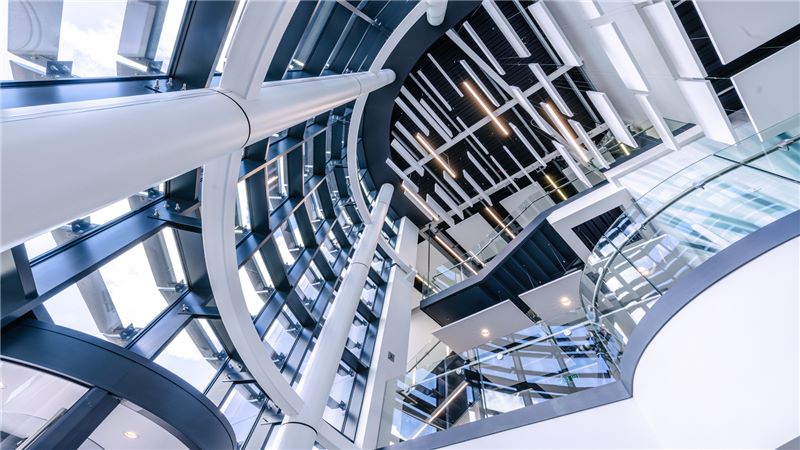Materials Passports
THE CHALLENGE
The built environment contributes over 40 per cent of the total carbon emissions worldwide. And given the sector’s energy requirements to heat, cool and build assets across the globe, it is perhaps no surprise. Around 50 per cent of the total built environment carbon emissions are embodied within the materials used, due to the energy needed to extract/mine, process, manufacture and transport them. If we are to have any chance of meeting our carbon targets to avoid significant climate change then we need to find ways of reducing this ‘embodied’ carbon.
One of the most effective ways to do this is to ensure materials stay in use for as long as possible, to reduce the need to continue to extract raw material and use energy intensive manufacturing. This means transforming from a short-term focused, throw-away culture to a more circular model, that sees value in retention and reuse of materials. In the built environment context, this means utilising existing buildings for as long as possible, or reusing the components of the buildings.
Advancements in technology mean that we’re getting closer and closer to making this a reality. One project leading the way is Edenica, a 12-storey, 95,000 sq ft office and retail scheme on Fetter Lane in the City of London.
THE APPROACH
Edenica's design incorporates various sustainability features, including mixed-mode ventilation, water recycling, and underfloor air systems, to support its net zero operational aim. Tenants will also enjoy communal green space, best-in-class cycling facilities and a refreshed pedestrian route.
But the project team are also piloting Materials Passports, an initiative that marks a critical step forward in achieving a circular economy in the built environment. Materials Passports are digital documents that report everything you might need to know about the building's component parts to facilitate future re-use at a much-reduced carbon count. Taking waste from one project and using it as a resource for another is the essence of circular economy, an increasingly applauded concept intended to reduce human environmental impact.
Materials Passports hold digital data sets of the building’s characteristics, materials, and components to provide robust, reliable information on the potential value for present use, recovery, and future re-use. The ambition is to give owners, occupiers, design teams and construction teams the confidence to re-use in the future, either during the building's operation or at the end of its lifetime.
As Principal Contractor, Mace is collaborating closely with Waterman and the wider team to support the initiative and ensure the Passports are delivered in a practical and efficient way. The work will create a comprehensive set of circular pathways for each material used and provide the following essential data for the Materials Passports: a unique ID, the building's credentials, and record physical stamps, manufacturer and contractor information, data on the materials, products and components used, sourcing certificates, circularity abilities, and carbon content.
The concept of Materials Passports has existed for some time, but the industry has yet to put it into practice - until now. The Edenica project team have made it significantly easier for materials to be diverted into re-use and avoid waste thanks to the latest design techniques and increased materials data visibility.
Mace, Watermans and the project team are collaborating with BRE, City of London, and EU-funded CIRCuIT (Circular Construction in Regenerative Cities) to standardise the process and reporting for roll out across the UK. Bridging the gap between theory and reality and showcasing how circular construction approaches enable us to build more sustainably and transition to a circular built environment.
While the Edenica project will set a significant sustainability precedent for UK commercial offices, the pioneering Materials Passport approach will help cut whole-life carbon and support the transition to a circular economy in the construction sector. The initiative turns the buildings of today into materials for the future, enabling confident re-use and dramatically reducing the requirement for carbon-intensive new materials.













